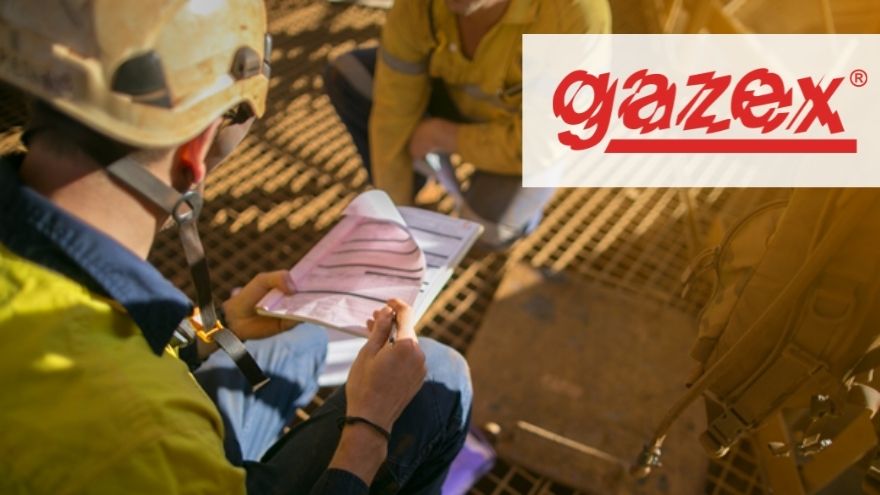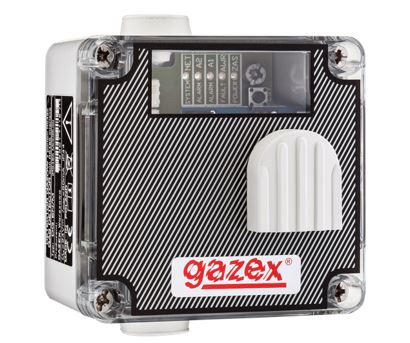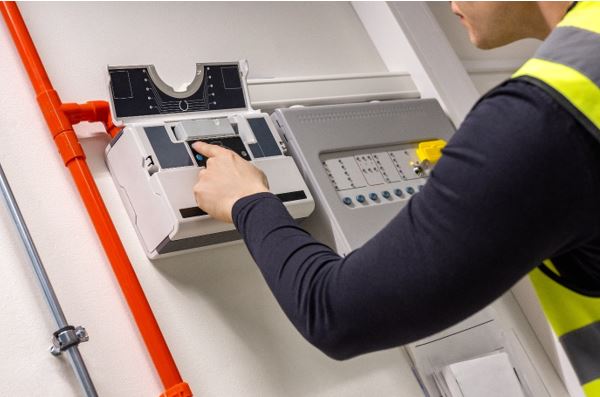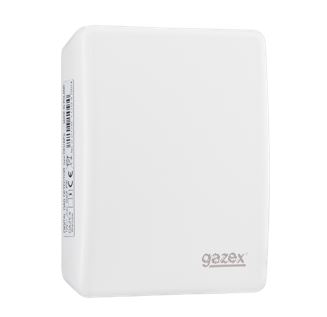
Carbon monoxide is a gas that poses a great threat to human life. It is odorless, colorless and lighter than air. Its presence can only be detected using special carbon monoxide detectors. For this type of protection to function properly, the entire gas detection system must meet certain conditions. Check out our guide on this topic and read how to minimize the risk of carbon monoxide poisoning!
From the article you will learn:
- what conditions must a gas detection system meet,
- how to minimize the risk of carbon monoxide poisoning,
- where to install carbon monoxide detectors.
Gas sensor as a key element of every detector
Gas detection may be carried out by extensive detection systems or independent sensors, including gas detectors . In the first case, in a threat situation, the system triggers an alarm and informs the building owner, its manager or the company responsible for its security via a mobile application. In the second case, the device only sends local sound signals, warning against too high concentrations of carbon monoxide in the air.
Check out Gazex detectors!
In both cases, carbon monoxide detectors play the main role. These are small devices whose key element are gas sensors . Four types of sensors are used in electronic detectors:
- Electrochemical - cells that generate electricity. Its intensity is proportional to the concentration of gas penetrating the electrolyte. Sensors of this type are most often used to detect toxic gases.
- Catalytic - contain an active and passive element with identical resistance at the same temperature. Under the influence of flammable gas, the oxidation reaction occurs only on the active element. As a result, heat is released and voltage appears in the system, which informs about the exact value of the gas concentration.
- Infra-Red - using the phenomenon of absorption of infrared radiation by chemical bonds of gas molecules. These sensors are typically used for precise measurements of carbon dioxide, propane and butane concentrations.
- Semiconductor - based on the phenomenon of surface adsorption of gas on the measuring element. If a threat is detected, the resistance of the semiconductor changes, related to the concentration of a given gas in the air. Sensors of this type are used in threshold detectors, and their most perfect form are carbon monoxide sensors.
The selection of appropriate sensors is determined by the conditions in the facility and the required precision of measurements. Only by taking into account these criteria will the detectors work properly and meet users' expectations.
What should you pay attention to when installing gas detectors?
 To ensure proper operation of the detection system, 4 basic conditions must be met:
To ensure proper operation of the detection system, 4 basic conditions must be met:
1. Proper selection of devices
When choosing gas sensors, you should take into account air temperature and humidity , as well as the presence of gases that interfere with measurements. Depending on the users' needs, aspects such as the method of data visualization and archiving as well as the possible need to control actuators and use emergency power supply must also be taken into account. When selecting devices for the conditions in a given building, the proper setting of alarm thresholds will be very important - remember that too low a level may trigger unnecessary warnings and disrupt the proper functioning of the facility.
2. Installing sensors in appropriate places
The detector will only monitor gas concentration correctly if it is installed in the right place. Therefore, remember to place the devices where gas may accumulate. You need to take into account, among other things , its weight, as well as air movement in individual rooms (e.g. the presence of exhaust and supply openings). Remember to ensure easy access to each sensor.
3. Correct installation
As with any other electronic installation, gas sensors should be connected in accordance with the instructions and using appropriate mounting materials . Make sure that the wiring is done carefully and in accordance with applicable regulations.
4. Correct use of the system
Gas concentration measurement will only be reliable if the entire system is used properly. It is therefore necessary to follow the rules set out in the user manual and carry out inspections and calibrations at the recommended times . Remember that the sensor sensor can only be adjusted by authorized laboratories under the conditions specified by the manufacturer.
How to minimize the risk of carbon monoxide poisoning? Rules that every installer should communicate

A gas sensor in each of the strategic rooms of the building guarantees safety and protection against carbon monoxide. It is worth being aware of where this threat comes from. Installers of carbon monoxide detectors should always communicate rules that will help minimize the risk of poisoning. So what should you remember?
- Regular technical inspections of heating and ventilation installations and checks of chimney patency.
- Modernization of outdated heating devices - replacement of equipment with devices equipped with the necessary protections and sensors.
- Proper ventilation of rooms where boilers are located.
- Installation of a professional gas and carbon monoxide detector or an entire detection system.
 It is also worth making people aware of what contributes to the presence of carbon monoxide in the air and how to behave if it is detected. Therefore, the installer should remind that high carbon monoxide concentrations are caused by fires, leaks in gas and coal stoves, exhaust gases flowing back from chimneys and poorly functioning ventilation .
It is also worth making people aware of what contributes to the presence of carbon monoxide in the air and how to behave if it is detected. Therefore, the installer should remind that high carbon monoxide concentrations are caused by fires, leaks in gas and coal stoves, exhaust gases flowing back from chimneys and poorly functioning ventilation .
When the detector detects a danger while measuring the carbon monoxide concentration, an appropriate sound signal will sound. It is then best to leave the facility and call for help . In such cases, you should not enter the boiler room because the level of carbon monoxide in the air may be very high there.
GAZEX detectors in the Onninen wholesaler
When looking for high-quality gas sensors, it is worth checking out the wide offer of the Onninen wholesaler. Here you will find primarily GAZEX detectors that monitor the concentration of both carbon monoxide and other dangerous substances - including methane and propane-butane.
A wide selection means that in our assortment everyone will find a gas sensor perfectly suited to their needs. The Onninen installation wholesaler offers detectors using various types of sensors, intended, among others, for underground garages, gas boiler rooms and for home use. All products are characterized by a high level of precision and reliability. These simple devices significantly increase the safety of people staying in residential buildings, offices and public facilities. Regardless of where you install your gas detection system, you will find the sensors you need in our warehouse!